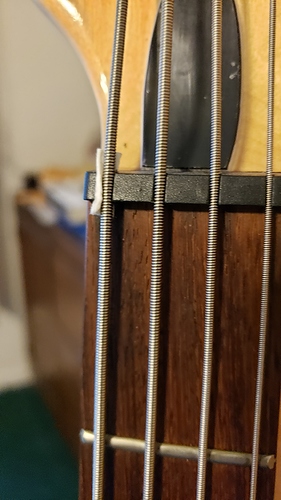I’m trying to figure out if my bass has a setup problem, or maybe it’s just me. I bought a Squier used. It had been modified; I was able to replace the modded electronics with Switchcraft / Fender / Seymour Duncan hardware.
After a time I noticed that the action on my bass is a lot lower than what I’ve tried at guitar center. It’s been modded I am sure, and the intonation is a little off on the A string.
Here’s my issue: I was working in the improv lesson in module 8 using the F major scale on the E string, and I just buzz a lot on the 1st fret of the E string. I try and try to be more deliberate, but I just can’t tame that first fret on E. When I let up on it with out taking my index finger off it, it just buzzes for a instant, and it it really bugs me. I can make it behave, but not in an exercise.
Is my index finger weak? …or is did whomever set up this bass file down the nut down too low?


